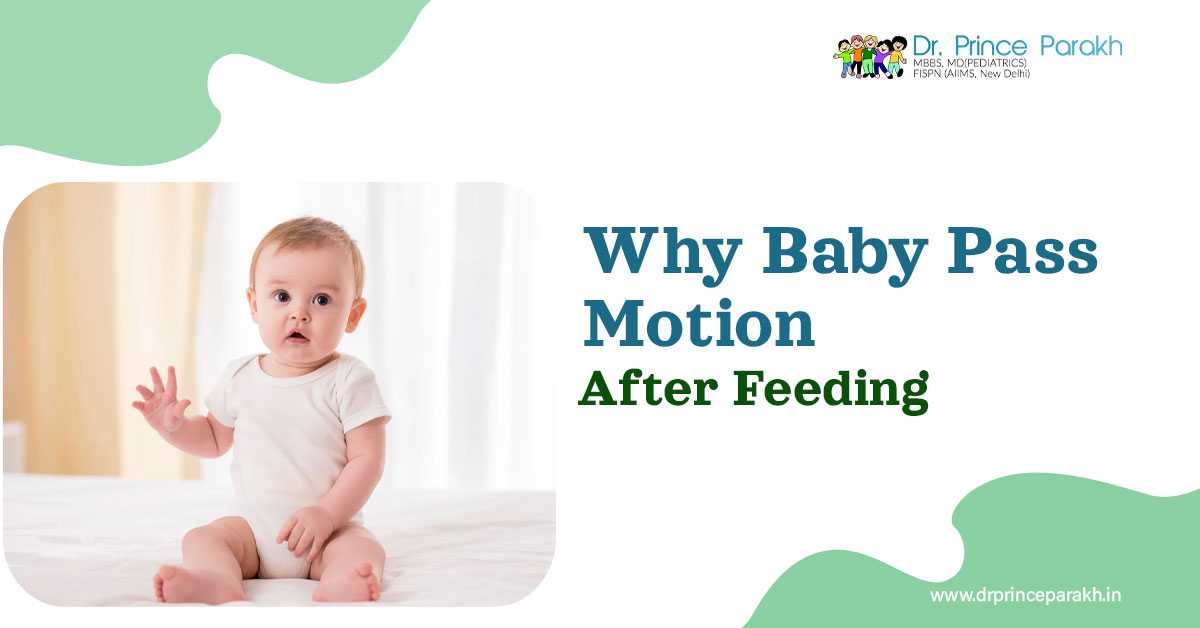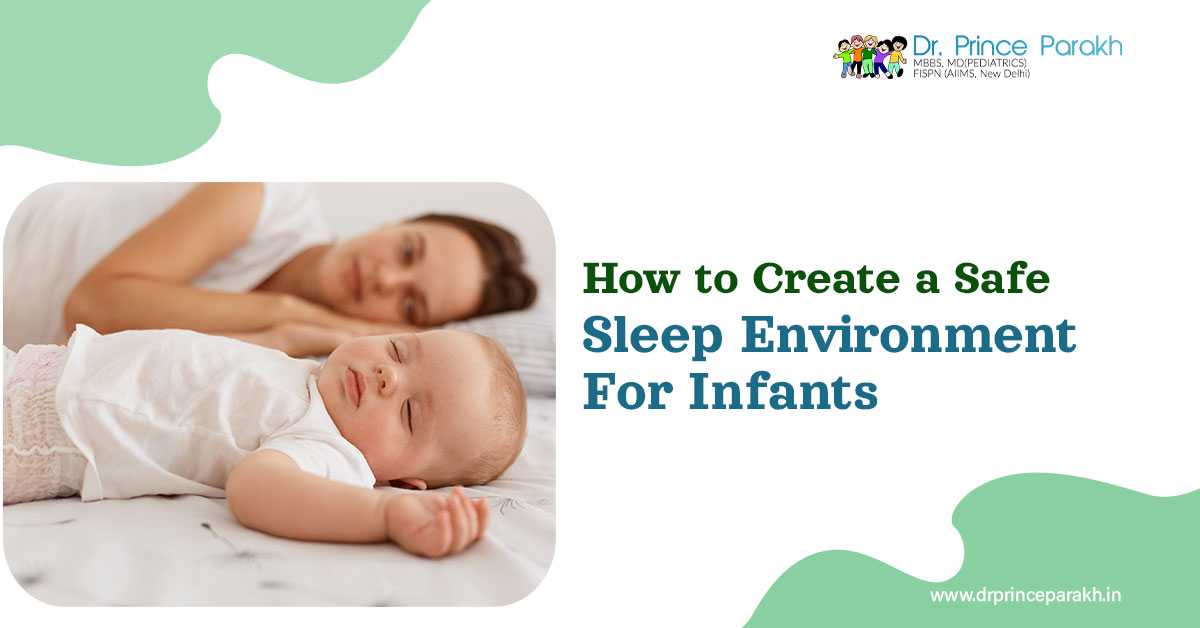Is it your responsibility to ensure your baby's safety while sleeping? The same concerns are prevalent among many new parents. The excitement of welcoming a newborn is not limited to sleep safety, as it also brings other concerns. Sleep is crucial for your baby's growth, brain development, and overall health, but innocuous sleep settings can heighten the risk of complications like sudden infant death syndrome (SIDS) and accidental suffocation. A Child Specialist Doctor in Siliguri is on hand to provide guidance on creating a secure sleeping environment for your baby, answering questions you may have, and providing helpful advice. Assistance will also be provided upon request.
Why should every parent prioritize Baby Safe Sleep?
It's crucial for your baby to get enough sleep. Even so, ensuring that your baby's sleep environment is secure is equally crucial. Sleep is a crucial aspect of infant development, and they require exceptional attention. In the absence of a secure sleep setting, babies are more susceptible to accidental injury, suffocation, or SIDS. Why is this so?
Studies have revealed that infants who sleep in unsafe conditions are more prone to accidents during the night. Ensuring a secure sleep environment guarantees your baby receives optimal rest and wellness.
What is the safe sleep environment for an infant?
The baby's sleep environment must be secure and free from any risks associated with it.. This entails correct sleeping positions, the right bedding, and creating an environment that minimizes your risk of falling or suffocation. Here's what you need to know before putting your baby to sleep safely:
- Firm Pillow: A pillow that is firm pillow will provide support for your baby's developing body. The risk of suffocation is high if your baby rolls into a soft mattress that will conform to their face.
- No Soft Bedding: Avoid using pillows, blankets, stuffed animals, or bumper pads in the crib. These can all obstruct your baby’s breathing, leading to suffocation or SIDS.
- Back Sleeping: Always place your baby on their back for sleep. This position helps reduce the risk of SIDS and ensures that your baby can breathe easily.
- Room Temperature: Overheating is another concern. Keep your baby’s room at a comfortable temperature (68°F to 72°F or 20°C to 22°C) and dress your baby in light layers to avoid the risk of overheating.
- Clear Crib: The crib should be free of any unnecessary items that could pose a suffocation or choking hazard. The crib should only contain a firm mattress with a fitted sheet.
Ways to create a safe sleep environment for your baby
There are several steps you can take to create a safe sleep environment for your baby. By paying attention to the details, you can ensure that your baby’s sleep is as safe as possible.
Always Place Your Baby on Their Back to Sleep
The most crucial guideline for safe sleep is to place your baby on their back to sleep. Babies who sleep on their stomachs or sides are at an increased risk for suffocation and SIDS. This recommendation is backed by research and is one of the most important ways to protect your baby. Even if your baby rolls onto their stomach during sleep, always reposition them back onto their back.
Use a Firm Mattress with a Fitted Sheet
A firm mattress is essential for a safe sleeping surface. Soft or sagging mattresses can lead to suffocation if your baby’s face gets pressed against them. A firm mattress supports your baby’s body and helps keep their airway open. Additionally, always use a fitted sheet on the mattress that is snug and cannot be pulled off. Avoid using loose blankets or soft items that can cover your baby’s head.
Avoid Soft Bedding, Pillows, and Bumpers
Soft bedding like pillows, blankets, and bumper pads should never be placed in your baby’s crib. These items increase the risk of suffocation, strangulation, and overheating. Instead of blankets, use a wearable blanket or sleep sack to keep your baby warm without the risk of suffocation.
Room Sharing Without Bed Sharing
Room-sharing means that your baby sleeps in a crib or bassinet placed in your room, ideally within arm’s reach of your bed. This arrangement allows you to monitor your baby’s sleep and quickly attend to their needs. However, it is important not to bed-share. Bed-sharing can increase the risk of suffocation, falls, or accidental injury. Keeping your baby in a separate sleep space like a crib or bassinet next to your bed is the safest option.
Control the Room Temperature
Maintaining a comfortable room temperature is crucial for safe sleep. Overheating can increase the risk of SIDS, so ensure that your baby’s room stays cool and well-ventilated. Dress your baby in light layers, such as a onesie or a sleep sack, and avoid using heavy blankets or quilts. Check your baby’s temperature regularly by feeling the back of their neck or their chest. If they are sweaty or too hot, remove a layer of clothing.
Use a Pacifier at Naptime and Bedtime
If your baby is old enough (typically after the first month), consider offering them a pacifier during naps and bedtime. Research has shown that pacifiers may help reduce the risk of SIDS. A pacifier can help your baby maintain a safe sleep position and may help prevent deep sleep, which reduces the chances of suffocation. However, make sure to keep the pacifier clean and avoid attaching it to any strings or cords that could pose a strangulation hazard.
Establish a Consistent Sleep Routine
Babies thrive on routine, and establishing a consistent sleep schedule can help your baby develop healthy sleep habits. A predictable bedtime routine signals to your baby that it’s time to sleep. This can include a warm bath, soft music, or a gentle lullaby. A consistent routine not only helps your baby fall asleep more easily but also improves their overall sleep quality.
What are the five S's for baby sleep
The Five Ss is a well-known technique used by parents to help soothe their baby to sleep. This method is designed to mimic the environment your baby experienced in the womb, providing comfort and relaxation. Here are the Five S’s:
1.Swaddle
Swaddling involves wrapping your baby snugly in a soft, breathable blanket. This helps mimic the feeling of being in the womb and can provide comfort and security. When swaddling, make sure you do not wrap the blanket too tightly around your baby’s chest to allow for free movement of the hips and to prevent overheating.
2.Side/Stomach Position (During Soothing Only)
Although your baby should always sleep on their back, holding them in a side or stomach position during the day (when awake and under supervision) can help calm them down. This position mimics the feeling of being held close to your body, and many babies find it soothing. However, this should only be used when your baby is awake and being held.
3.Shush
Shushing is a simple technique that can calm a fussy baby. The sound resembles the noises babies hear while in the womb, and it can help soothe them. Gently shush your baby in a rhythmic pattern, which can help calm them down and promote sleep.
4.Swing
Gentle rocking or swinging mimics the movement your baby felt in the womb. Whether you hold your baby in your arms or use a gentle baby swing, the rhythmic motion can help relax your baby and prepare them for sleep. Be sure the swinging is slow and gentle, as rough or jerky movements can be unsettling for some babies.
5.Suck
Many babies find comfort in sucking. Whether it’s sucking on a pacifier or your breast, this action can help soothe and calm your baby to sleep. If you are breastfeeding, this also provides the added benefit of bonding and ensuring your baby is well-fed before they sleep.
Conclusion
Creating a safe sleep environment for your infant is a key aspect of ensuring their health and well-being. By following these simple steps, such as placing your baby on their back to sleep, using a firm mattress, keeping the crib free of soft bedding, and maintaining a comfortable room temperature, you can reduce the risks associated with sleep-related accidents.
If you have any questions or concerns about your baby’s sleep safety, it’s always a good idea to consult with a child specialist doctor in Siliguri. Get expert guidance from Dr. Prince Parakh today.
Comments (0)






